Kill Team: Octarius, the new starter set for the new edition of Kill Team, will be on preorder next Saturday. We received the enormous box set early and take a look at all of its components, including the new Death Korps and Ork Kommando models, and the Ork scrap town terrain pieces. We’ll share our initial impressions of the new edition of Kill Team and give you a glimpse of all the Kill Team related tutorials we’ve planned for the coming days and weeks.


Please note: Games Workshop provided us with a copy of Kill Team: Octarius. Thoughts and opinions are our own.
Kill Team: Octarius will be available for preorder from Saturday, August 14th. We heard it will be priced at £125, with the core book and compendium at £30 each. We also heard that the box will have only a single print run and might sell out quickly – unfortunately, the FOMO might be real this time. We cross our fingers so no one has to miss out. Update August 10th: Games Workshop promised that the made a lot of boxes and if stock would run out, then they would provide you with a box on a made to order basis.
The starter box
We all know the glee of cracking open a big box of plastic, and wow, this box is enormous. About the same size and weight as the original Kill Team starter set, which combined existing Skitarii and Genestealer Hybrids models with a bucketload of (at the time new) Sector Imperialis ruins. This time though, (almost) all of the models are new: Completely redesigned Death Korps of Krieg in glorious multipart plastic, brand new multipart Ork Kommandos, and a whole junkyard of Ork scrap terrain. You can really feel how much effort went into creating this box.


For the accessories, we have a cardboard gaming board with a desert junkyard theme, a set of combat gauges and dice, a mission book, a set of 54 tactic cards, tokens, and of course the new core book. One thing to note: The Octarius box only contains the rules for the included models (Veteran Guardsmen and Ork Kommandos). To get the datasheets and rules for the other factions you need to get the new Kill Team Compendium book.
The models
Death Korps of Krieg are a fan-favourite Astra Militarum regiment, and I’m sure the models included in Kill Team Octarius are only the spearhead of what there is to come. The models are excellent. While they are slightly beefier and more heroic proportioned than the Forge World versions, they come on 25mm bases and scale well with existing Astra Militarum models like Cadians and other human-sized models as Skitarii. While the heads, bodies, and legs aren’t interchangeable, the arms have flat joints and are therefore quite modular.


What’s really interesting is the way the ten models are distributed over the three medium-size sprues. Two of them include the basic “codex” loadout with ten unique bodies, lasguns, special weapons, and sergeant wargear, while the third sprue is an upgrade sprue with all of the fancy Kill Team specific equipment and extra posing options.
I imagine we’ll see this approach repeated for at least a few other factions, taking existing model kits and adding new Kill Team upgrade sprues. And we’ll probably also see the basic Death Korps models released for 40k without the extra sprue.
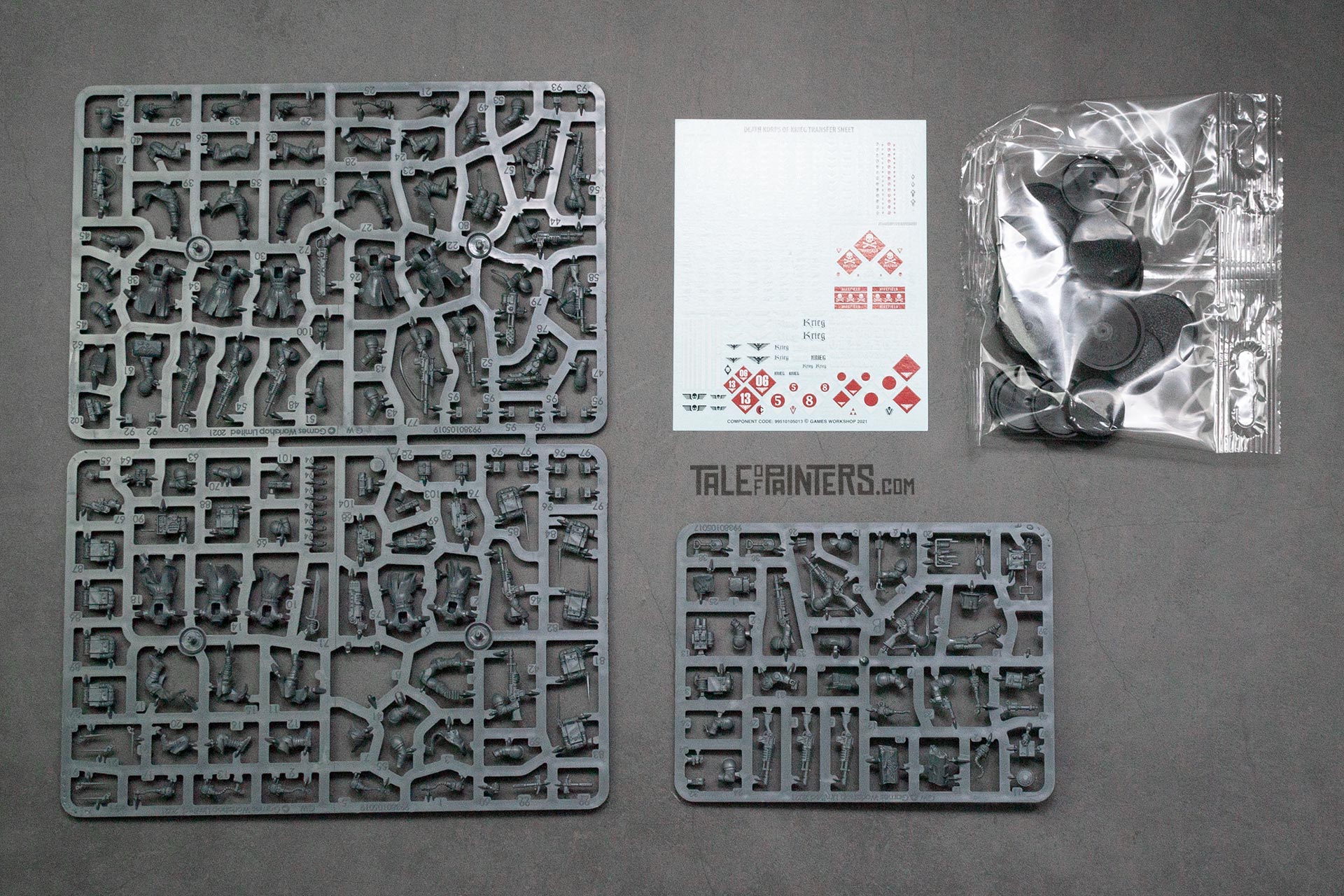

The Ork Kommandos come on three medium-size sprues as well, but unlike the Death Korps, there is no dedicated upgrade frame. Instead, the components for the ten different sculpts (plus the grot and bomb squig) are scattered all over the frames. Sadly, there is not much modularity in this kit. 9 of 10 bodies have two choices of arms, either the basic slugga and choppa loadout or one of the special weapons, as well as two choices of heads. The tenth body has no assembly options and is essentially monopose. The Nob and Grot also have two head options each, note that the Nob can’t be assembled as a regular Kommando. There are enough masked heads to have a fully masked unit, but there only three bare heads.
People with the new Ork codex in hand confirmed that all of the new wargear options from Kill Team found their way into Warhammer 40.000, making for a quite convoluted datasheet as there are plenty of new options like a breacher ram, shokka pistol, bomb squig, and of course the hilarious Kommando Grot. Kommandos offer a lot of options and useful abilities at a low point cost, so I think they’ll be a very competitive choice in Warhammer 40.000.
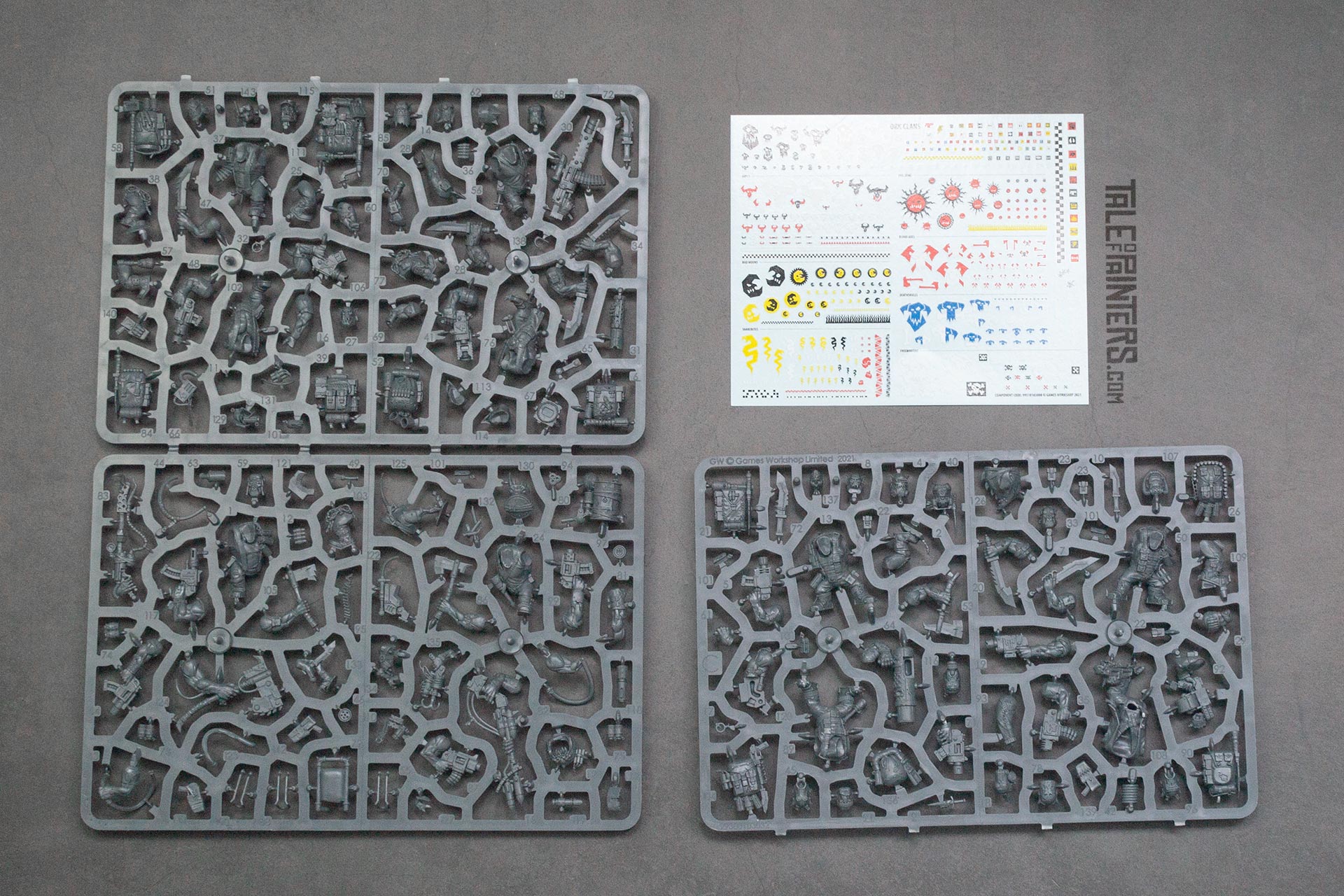

Finally, the scenery. It’s such a great sight to see a table full of Xenos terrain, even if it’s just a Kill Team sized board. All in all, you get six large sprues of orky goodness. There is are two large sprues that build the large structures and the barricades, each included twice, so you will end up with two copies of the same buildings and barricades, as the design sadly allows no modularity without serious converting skills. The oil pump rig is a sprue of its own. The two sprues of scrap piles aren’t actually new as they’ve been already included with the Speedfreakz board game and in the Mekboy Workshop set, but they still look great. The smaller, more Imperial-looking barricades are actually part of the sprue that makes the three combat gauges.
Update August 10th: Sprues & Brews pointed out that the larger Ork structures combine into a large intact building.
Game design
The original Kill Team was basically an offspring of the core Warhammer 40.000 rules, just as its predecessor Shadow War: Armageddon (and the original Kill Team expansions for Warhammer 40.000 before). The 2nd edition of Kill Team is a completely new game designed from the ground up, sharing almost no similarities with the 40k core rules. It takes some of the most interesting concepts from games like Warcry and Necromunda while adding a few tricks of its own.
Sure, models (or operatives as they are called now) still move around the board while they seek to fulfill objectives, engage in firefights, or close combat, but they do so in an activation point system in alternate order with your opponent. Stats have become more granular, as most models have at least 7 wounds or more, allowing a more varied design than in the old Kill Team edition where models were limited to 1 or 2 wounds and a slightly cumbersome flesh wound system to make up for it.
One controversial change that spurred a lot of discussion online has been the switch to an abstract, icon-based range system. Four colour-coded symbols translate to ranges of 1″, 2″, 3″, and 6″, and unfortunately, the choice of symbols is a bit hapless, as a three-sided shape was chosen for 1″, a five-sided shape for 6″, and so on.


It’s something that just messes with my brain, and in the end, I feel it’s more of a change for the sake of change. Having said that, I don’t think it will be much of a deal-breaker. I actually like how the game is designed around the included combat gauges, and while there is nothing wrong with tape measures, personally I find combat gauges or similar templates slightly handier and more comfortable to use.
Roster and Kill Team building
What might be more of an issue to some people might be the new rules for team building and roster selection. You still bring a roster of 20 operatives, but points are a thing of the past, replaced with a more streamlined system. Basically, every faction has a small number of different fire teams to choose from. Each fire team comprises a set number of operatives you fill with models from your roster, with added limitations for how many special weapons you can bring. These limitations are often based on the number of weapons and options that come in the corresponding kits. For the Death Korps (Veteran Guardsmen), there is only a single fire team of 10 models available, and you can choose only one of each special weapon (as there is only one of each special weapon on their sprues).
There is a high chance that your old Kill Teams won’t be compatible to the new Kill Team – I’m sure I’ll have to paint a few more models for my Adeptus Mechanicus Kill Team to match the new fire team structure, and probably won’t be able to bring more than one plasma caliver unless I double up on Skitarii fire teams and do away with the Sicarians.
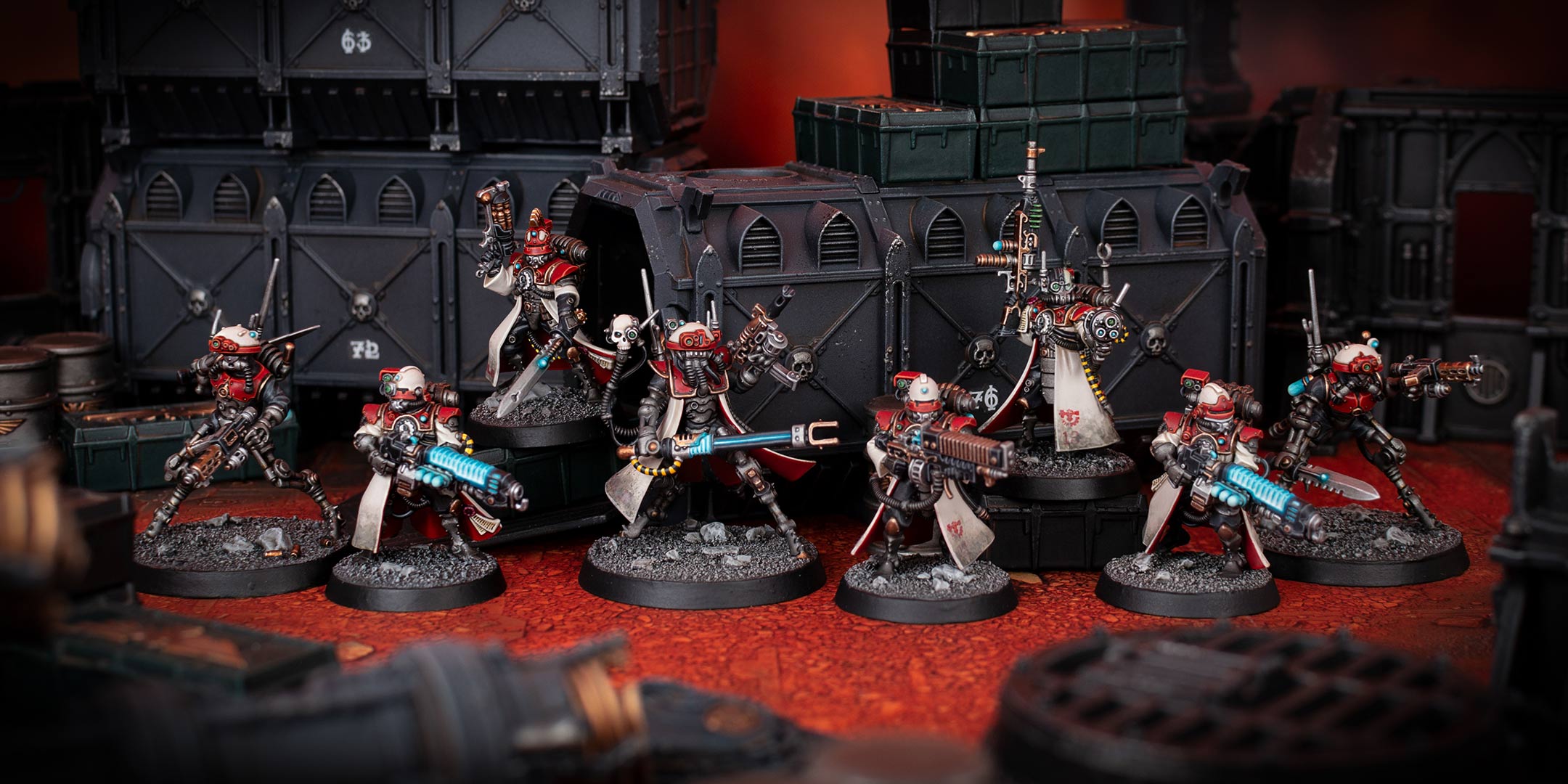

From what we’ve seen, there is also a trend of having more datasheets for each faction but with no options to choose from. For the Death Korps (Veteran Guardsmen), we have more than ten different datasheets based on their various battlefield roles, but with almost zero customization options. Other datasheets such as Primaris Reivers have been streamlined, gone are the optional gravchutes or grapnel launchers. To make up for it, during roster selection, you can spend 10 points on a list of additional faction-specific and generic equipment that grants your operative special actions during the game.
Doing away with points is something that worked really well for the first edition of Age of Sigmar… not. There are definitely merits to the new system – the power levels of different Kill Team factions can be easier balanced, there is less room for spamming certain loadouts, and the pre-game selection of selecting your roster is sped up considerably. There are new tactical choices to be made, and it opens a lot of design space for expansions and custom missions with custom fire teams. And as the available choices are based on what you find in a model’s box, there is less need to go for bitz hunting.


On the other hand, if you enjoyed the deep list building element of old Kill Team, you might have a hard time with the new edition. If there is Necromunda on the one end of the complexity scale, then you’ll have Kill Team on the opposite end of the scale, with its streamlined system that feels more like a deck building game, and Warcry in the middle, with set “datasheets” but a point-based warband building system.
I don’t want to go into more depth here – Tale of Painters is about painting and collecting, so I’m sure there are more experienced players and Kill Team veterans out there. Our friend John from Can you Roll a Crit has a pretty detailed look at the new ruleset, for example.
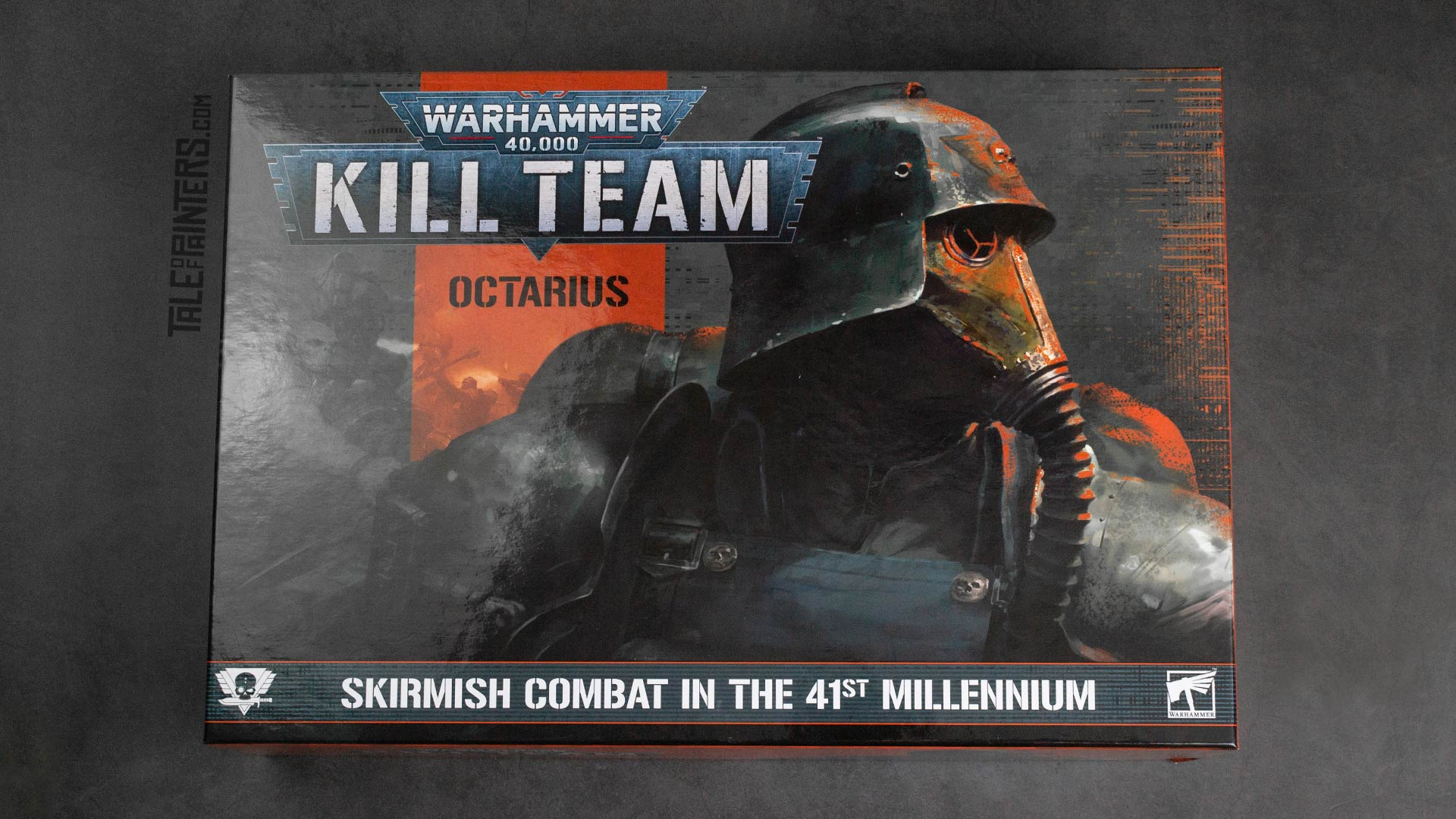

Conclusion
All in all, the components and models of Kill Team: Octarius are fantastic. I can’t wait to paint the models and provide you with detailed tutorials. If the changes to gameplay and roster-building are really what the people wanted from a new edition, we’ll see. Don’t be biased and give the new edition a chance, from what I’ve seen there are a lot of clever ideas that are worth to be given a try.
Over the course of the next days and weeks, we’ll post tutorials for most of the models included in Kill Team: Octarius. Come back on Wednesday for two easy ways to painting Ork (Kommando) skin, so stay tuned and make sure to bookmark Tale of Painters if you haven’t yet.


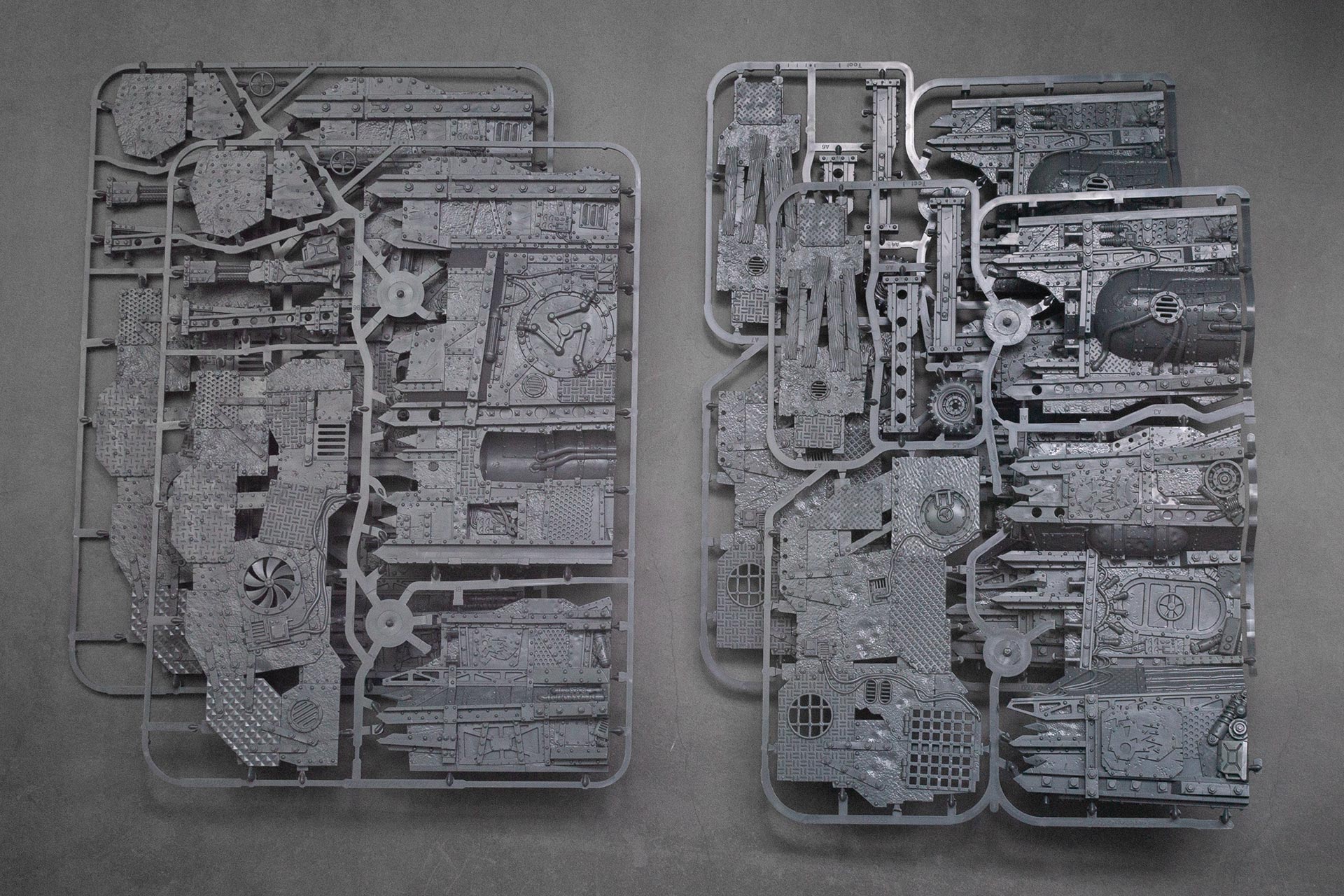
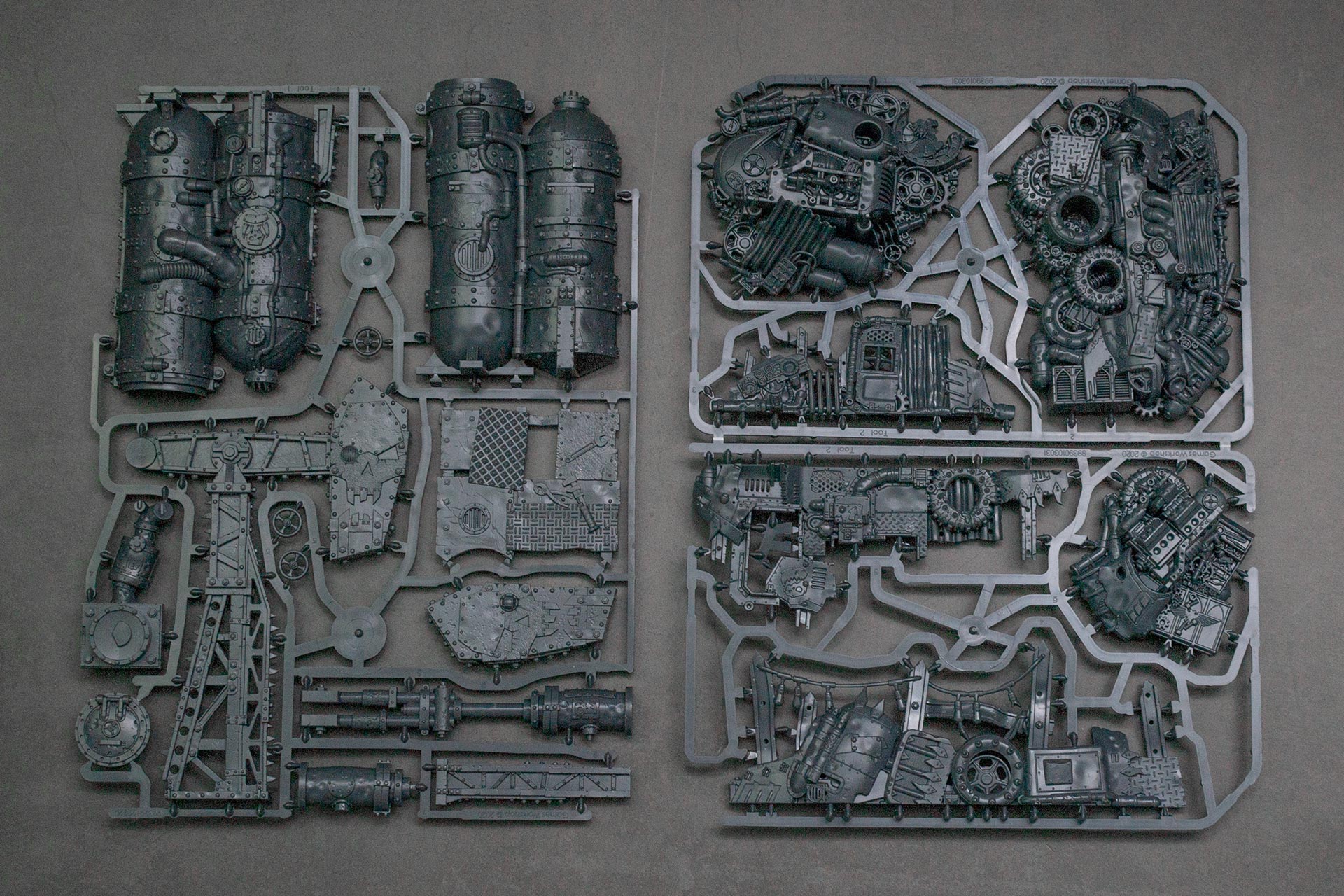






Love this Article 🙂 I bought it and I am happy with it.
I also created a Project on PoS for it https://pile-of-shame.com/projects/kill-team-octarius
Thanks for posting this Stahly! Really appreciate the sprue shots and the Guard comparison picture too.